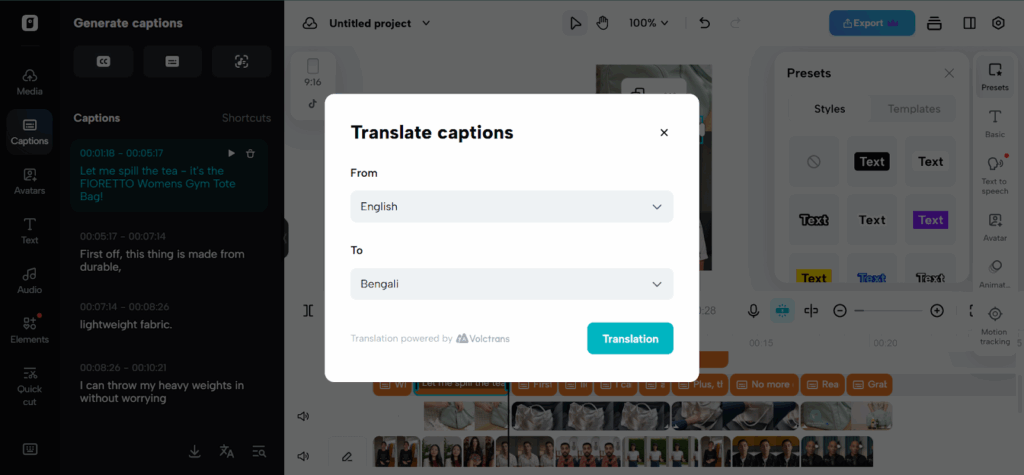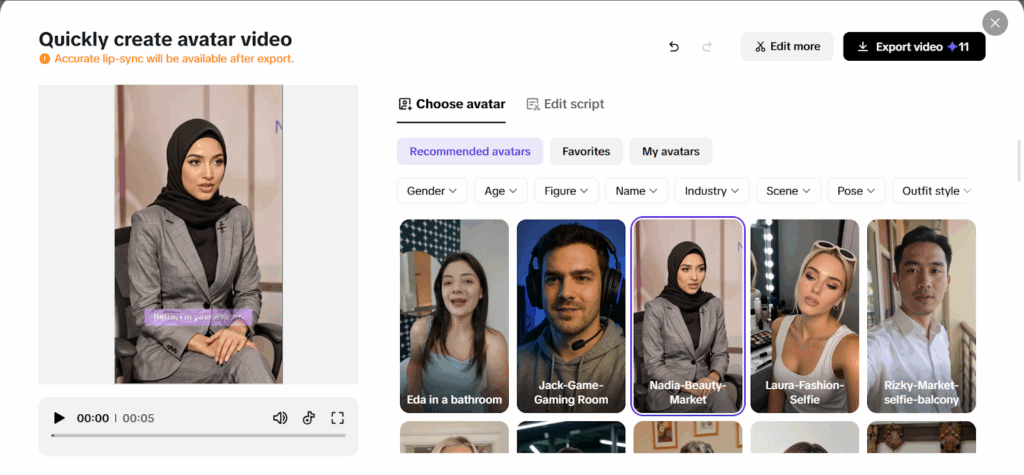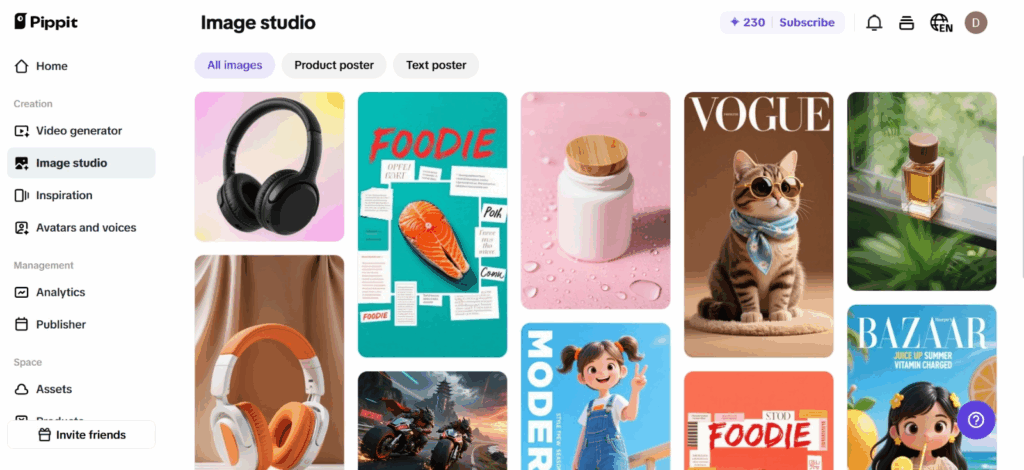Picture weeks spent creating the ultimate ad — snappy images, memorable sound tracks, and a narrative that absolutely captures your brand’s personality. It’s a work of genius. The catch: in an international market, a single work of genius is hardly sufficient. Each audience needs its own variation, with language, culture, and sensitivity in mind. Campaign cloning can change one advertisement into ten without requiring any changes.
Makers and dealers can easily modify material across boundaries with platforms like Pippit. Businesses may translate, localise, and alter their advertisements to appeal to the pulse of each market while maintaining a consistent brand image with the use of tools like an AI video generator. This isn’t copying — it’s magnifying.
Let’s explore how intelligent multilingual translation strategies turn replicating campaigns into a creative juggernaut.
Why one-size-fits-all ads don’t always work
It’s tempting to think a great ad can simply be exported as is. After all, emotions are universal, right? Not exactly. Humor, idioms, and even visuals can fall flat — or worse, offend — if they’re not culturally adjusted.
That’s why cloning campaigns is not merely about title-swapping. It’s all about thinking differently about how the story resonates without losing its initial spark.
The translation remix: a blend of creativity and technicality
Multilingual strategies bring both creativity and technicality. This is where Pippit’s video translator tools step in, ensuring every word is accurately translated while allowing for personality.
This is what cloning really means:
- Dubbing or subtitles are examples of language modification that takes into account regional accents.
- Cultural adaptations encompass modifications to the sights, gestures, and soundtrack.
- Raising awareness of the features of products that are particularly desirable in specific regions.
The result? São Paulistas, Parisians, and Seoulites all think the advertisement was made just for them.

Cloning in action: ten ads from one
And how does a single, excellent video turn into ten distinct campaigns? Through levels of adaptation, the wizardry takes place. The stages of cloning a campaign:
- Base clip: The first commercial, which used universal images and storytelling, is known as the base video.
- Language inclusion: Each language version has localized voice-overs or subtitles.
- Cultural adaptations: Modifying symbols, gestures, or settings for relevance.
- Platform-specific cutbacks: These include condensing for TV commercials, extending for YouTube, and shortening for TikTok.
Through integrating these levels, one creative investment flowers into a multilingual library of content that’s new-feeling for every market.
The hidden benefits of cloning campaigns
Ad executives often believe that cloning adds to their workload. It actually saves money and time.
- Reuse rather than redo: Each region doesn’t require new shoots.
- Quicker launches: It is possible to translate and localise a single basic video quickly.
- Consistent branding: All versions have the same visual identity.
Rather than reinventing campaigns for each country, cloning allows brands to scale their creativity efficiently.
The audience perspective: why it works
For viewers, cloned campaigns don’t seem like repeats — they seem intimate. Picture seeing an ad in your language, the gestures and expressions of which resonate with your culture. It’s a lightning-fast sense of familiarity.
Individuals don’t merely notice the brand. They sense being noticed by the brand. And that emotional connection typically turns into loyalty, shares, and revenue.
When emotion and timing are most important
Even the most clever translation may lose its impact if it does not seem to be in line with the speaker’s meaning. Lip sync AI can assist with that. It synchronises dubbed audio with lip movement to make advertisements appear natural rather than stiff.
This technology is quite useful when it comes to international promotions. Instead, viewers enjoy a high-quality advertisement with well timed smiles, laughs, and dramatic pauses, rather than feeling as though they are seeing a poor-quality movie dub. These few instances of genuineness are what drive conversions and confidence.

From regional to global stardom
Most successful brands began with one market before blowing up worldwide through savvy translation practices. Campaign cloning makes it possible even for small companies to fight above their weight, so global expansion is less about money and more about imagination.
A single ad no longer speaks one truth. It speaks ten — each of which is exactly calibrated to its audience.
Gestures, colors, and context: the unspoken side of translation
While campaigning on cloning, words are only half the battle. Images are sometimes more powerful than words, and what appears to be clever in one nation may appear garbled in another. Take the example of a hand gesture that is good in the U.S. but rude in another country.
Colors are also very important: white is associated with purity in some cultures, but with mourning in others. Even the location of an ad — such as a busy cafe or dinner at home — may require modifications to connect to local ways of living. Campaign cloning makes sure such nuanced yet critical changes are implemented, making ads relevant across cultures.
Balancing global consistency with local flavor
Finding a balance between a brand’s global identity and local salience is one of the most difficult parts of ad cloning. Excessive localisation could weaken your brand. If you don’t, you run the risk of offending viewers. Successful campaigns typically just make the required adjustments while preserving their primary imagery and brand narrative:
- Modifying idioms and humour in scripts.
- Avatars or actors that represent the local population are used.
- Emphasising particular product advantages that are significant to that area.
People will recognise your brand wherever your advertisement appears thanks to this balance, which also gives them the impression that you are addressing them directly.
Why pippit is your campaign cloning partner
Pippit simplifies campaign cloning in an intuitive and scalable way. With features such as the AI video creator, seamless translation options, and dubbing and syncing capabilities, it’s designed for marketers who need to go global without sacrificing their creative spark.
Rather than trying to rebuild ads in every market, Pippit enables you to easily convert them into multilingual assets in a short time, maintaining your message consistency and keeping your audience engaged.
If you’re ready to take one successful ad and make ten — and make every market think you built it specifically for them — Pippit is the platform to do it. Begin cloning smarter, and let your campaigns go farther than they ever have.


More Stories
The Importance of Gutter Installation for Your Home
Who Is Angelina Jolie: Get To Know Her Family
Why Professional Garage Door Installation Is Crucial